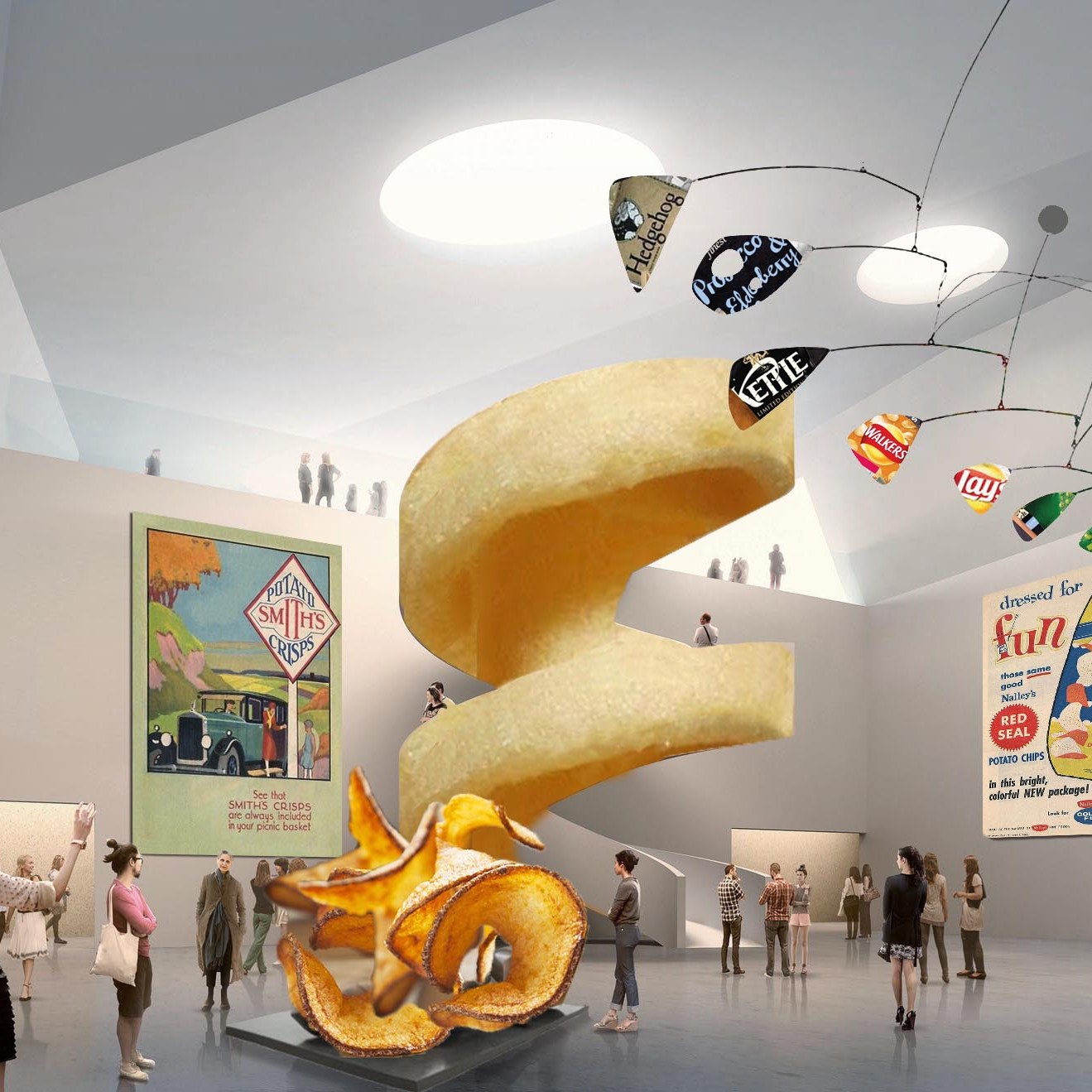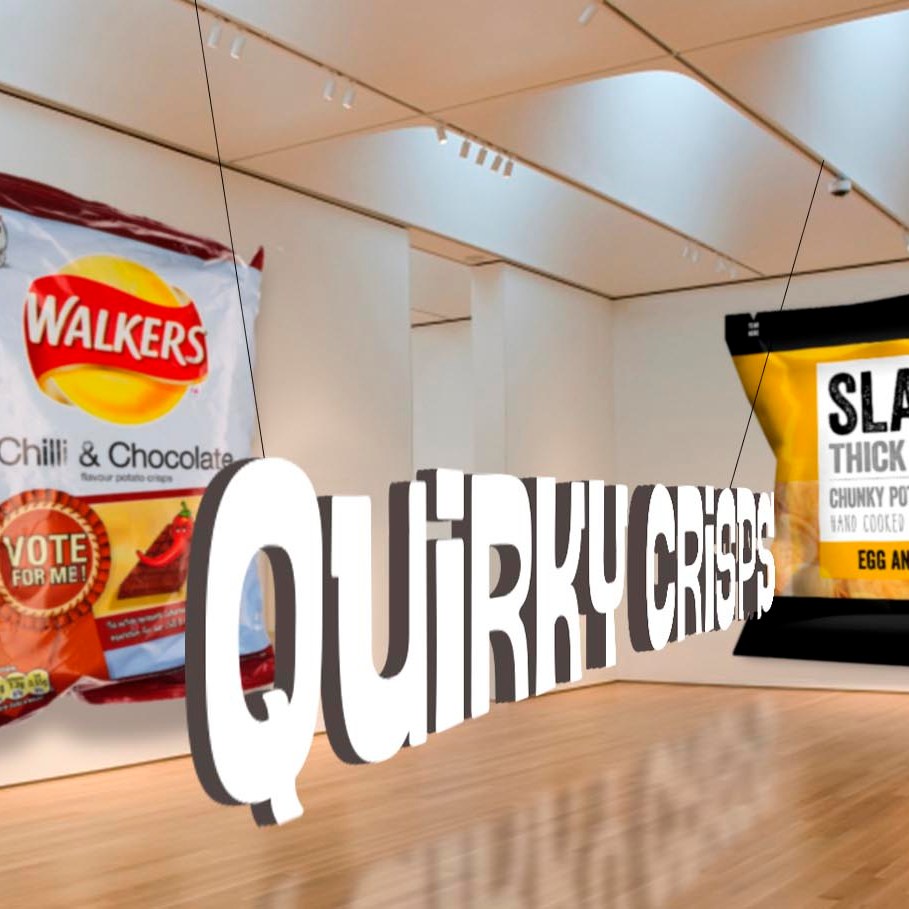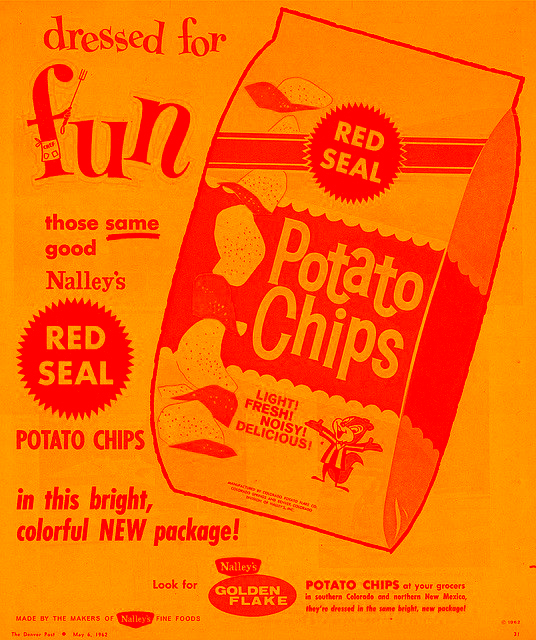




Welcome to The Museum of Crisps. We hope you enjoy your visit. The museum is open to crisp enthusiasts worldwide. It is a place to celebrate the crisp, marvel at crisp innovation and build your crisp expertise.
Crisps are known in some countries as chips, but we felt that calling this the museum of crisps and chips would be problematic, because it would imply that they are different things, which wouldn’t be a problem for grade B enthusiasts and above, but would be confusing for crisp novices. Also, we didn’t want to give the impression that crisps are more important than chips as a name, or vice versa. In the end, after several committee meetings and away days, the leadership team opted to name the museum The Museum of Crisps because the original recipe is British. After we had made the decision, a committee member pointed out that the original recipe is called ‘potatoes fried in slices or shavings’ and tabled a motion that we call the museum The Museum of Potatoes Fried in Slices or Shavings. We wish him well in his future endeavours.
But enough about us. Sit back, relax, break open a packet, be careful not to get crumbs on your keyboard and enjoy the museum.
The Museum of Crisps
Crisps through the ages.
First crisp
recipe
1817
First crisp
company founded
1920
First flavour
added
1954
Flavours created
to date
1300+
Two hundred years of crisps.

The first noted recipe for crisps can be found in The Cook’s Oracle, by William Kitchiner, published in 1817.
Crisps were first produced commercially by the Mikesell’s Potato Chip Company in America in 1910. The Smiths company, founded in London in 1920, spiced up the market by adding seasoning to their crisps. Flavoured crisps appeared in the 1950s, gaining popularity in the 1960s and 70s. The crisp market has never looked back.

A history of the crisp.
Crisps, also known as potato chips, are thin slivers of potato, deep fried or baked until crunchy. They are commonly served as a snack, lunch accompaniment side dish, or appetiser. Occasionally they feature as an ingredient in recipes, such as Tuna Crisp Bake. Originally, crisps were served unseasoned. Salt was added in time and flavours were introduced in the early 1950s. Since around 1990, there has been a surge in flavours – from Lamington to Baked Bean and from Curry to Caviar.
The first known reference to a food similar to the modern crisp was in a recipe book, The Cook’s Oracle, by William Kitchiner, published first in 1817. The recipe (number 104) is called “Potatoes fried in Slices or Shavings”. Sprinkled with “a very little salt”, they are the first known reference to ready-salted crisps. Kitchiner’s book was apparently a best-seller on both sides of the Atlantic. During the following decade, his recipe was referenced in many recipe books. Kitchiner was a celebrity chef of his day and his book contains eleven ketchup recipes.
Mikesell’s Potato Chip Company claims to be the oldest crisp producer, having commenced industrial production in Dayton, Ohio in 1910. A decade later, in the UK, the Smiths Potato Crisps Company introduced a twist of salt with its crisps, which were sold around London in greaseproof paper bags. The crisp remained otherwise unseasoned until an innovation by Joe ‘Spud’ Murphy, owner of the Irish crisps company Tayto, who, in the 1950s, developed the technology to add seasoning during manufacture. This resulted in the world’s first seasoned chips, Cheese & Onion, launched in 1954. Companies worldwide sought to buy the rights to Tayto’s technique. Salt & Vinegar crisps followed a few years later. Polling consistently points to cheese and onion and salt and vinegar being the most popular flavours to this day.
The first flavoured crisps in the United States, barbecue flavour, were also manufactured and sold by the mid-1950s. No other flavour, apart from original plain crisps, emerged in the US market until the 1970s.
Crisps form a large part of the snack and convenience food market in Western countries. For the 52 weeks ending July 14, 2019, approximately 139.9 thousand tonnes of crisps were sold in Britain alone. The global potato chip and crisps market size was estimated to be worth $35.5 billion in 2020. Forecasts point to the market being worth $44.2 billion by the end of 2025, a growth rate of 4.3% per annum.
Today there are more than 1,000 separate crisp and chip flavours globally. The Museum of Crisps aims to be the leading global crisp resource and as such we apply stringent criteria. We will only include varieties whose base ingredient is an unadulterated slice of potato, either flat or crinkle cut. To qualify for inclusion in our database, the flavour must have been on sale in a retailer or through a vending machine. We do not include parody packaging.
Crisps unite us. Congregating to have a collective crunch is one of the joys of life. We see crisps as a canvas upon which culinary artists can paint their masterpieces in flavours. Every August, we announce the Global Crisp Awards, singling out the flavours and innovations that contribute to making this one of the most exciting, creative and dynamic industries in the world.
If you spot a crisp innovation in the wild, please let us know. The email address is chip@museumofcrisps.com and our Twitter account is @museumofcrisps. Happy crunching!

About the Museum of Crisps.
The museum of crisps was founded in 2020 by a couple of crisp enthusiasts with too much time on their hands. We’re very proud of the result and hope you enjoy your visit! We aren’t affiliated to or sponsored by any company.
Contact the museum.
You can email suggestions for inclusion in the museum to






